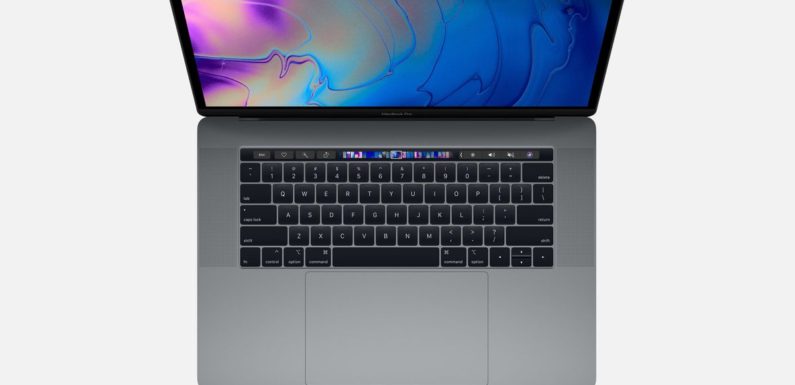
Are The New Apple MacBook Pros A Must Buy?
When it comes to portable power, Apple’s 13” and 15” MacBook Pros are the top of the line. They pack the best specs available under the hood, while also providing the best screen to look at for hours and hours at a time. After holding out for what seemed like way too long, I finally pounced on the latest release in July. Now that I’ve had time to really use it extensively, is it worth the extra money compared to the MacBook Air and MacBool? Also, is it worth upgrading from a previous MacBook Pro? Finally, does this make a user-friendly first MacBook for new users?
MacBook Pro vs. MacBook vs. MacBook Air
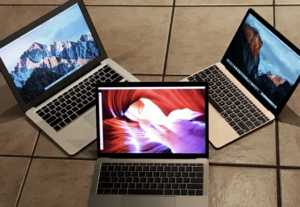
Apple offers an extensive list of options for people who are looking for a laptop. The three main types of laptops that currently make up their roster all serve specific purposes, but for those people looking for the latest and greatest, only the MacBook Pro to this point has been upgraded recently. At this stage, buying a MacBook Air or a MacBook would be buying tech that could be a bit out of date in just a few months. Considering the release schedule for Apple, the MacBook Pro released in July will be the top option at least for the next 12 months.
A MacBook Pro, whether it be the 13 inch (what I own) or the 15 inch, is just going to be able to handle more thrown its way compared to the other options. That’s not to say that the MacBook Air or MacBook struggles during performance tests, but the top MacBook only has a 1.4GHz dual-core Intel Core i7 processor (3.6GHz Turbo Boost), while the MacBook Air only goes as high as a 2.2GHz dual-core Intel Core i7 (3.2GHz Turbo Boost). For the MacBook Pro, even the entry level processor is faster, as the 13 inch options all have quad-core processors, while the 15 inch options have 6-core. Turbo Boosts go up to 4.5GHz for the 13 inch, and 4.8GHz for the 15 inch. Will the casual user really care about this? No, but Apple has designed the MacBook Pro as an option for those people who spend a lot of time on their laptop doing intensive tasks at times. I have been using this line as my work computer, since it allows me to handle every task that comes up.
Another thing to consider is the screen. The current MacBook line offers a 12-inch Retina display, which might be a bit too small for some people to stare out during an entire workday. The workaround is of course using an external display, but the portability factor goes out the window a bit. Upgrading to a 13.3-inch screen might not seem like a noticeable difference, but it definitely feels more spacious. The 15-inch screen is huge as well, and the perfect size for someone who is constantly looking at multiple windows at once. As for the MacBook Air, the screen is still just the LED-backlit widescreen display, which is pretty outdated at this point. The Retina display is tough to step away from once you’ve been spoiled.
What’s New?
Whether you are a new Apple MacBook Pro user, or one looking to upgrade, it’s important to know what exactly is new. When compared to the previous version, here are the biggest upgrades:
- Eight-generation quad-core Intel CPU (i7 or i9).
- RAM support now goes up to 32GB (previous limit was 16GB).
- SSD storage options increased (from 2TB to 4TB max).
- Display is improved, thanks largely to True Tone. This new option automatically adjusts the screen going off of ambient light conditions.
- Siri can now be used hands-free.
- A much improved keyboard. Apple received a lot of negative feedback when initially changing to a butterfly keyboard last generation.
- New improvements to Touch ID security and encryption (T2 subprocessor).
Built For Professionals In Mind
This is the Apple MacBook Pro line, so of course users expect a powerful machine even if they get the entry level model. Pricing seems to be fairly consistent compared to the last few years, so that’s a plus as well. It might cause a little sticker shock to those not familiar with Apple laptop options since the high end model can go over $4500 with maximum upgrades, but I spent less than half on my model, and it is probably more computer than I actually need at this moment. It is always nice to be a bit future proof as well, since most are looking to get a few years out of a new machine.
For my personal needs, I did not need the core i9 version of the Apple MacBook Pro, but the internal upgrades on that model are truly amazing. It was very much needed for the high end users. The speed boost alone when using processor-intensive tasks is apparent right away when I was able to mess around with one.
Video producers can really benefit from the higher end Apple MacBook Pro options as well thanks to being able to go up to 32 GB RAM and 4 TB of flash storage. For many creators, being able to have everything on one computer is essential. Workarounds in the past (multiple laptops, external drives, etc.) can just clutter things, so finally being able to really build a machine of this caliber is very much welcomed.
I know I’m only talking to a select group of people, but the beauty of the Apple MacBook Pro is that the base 13 inch and 15 inch models are affordable enough for people like me, while the maxed out models allow professionals to cut out steps and handle some of the most processor-heavy activities one can imagine. For example, color correcting video footage in real time is something that was pretty much unheard of just a few years ago. The MacBook Pro 2018 saves time by being able to do so much at once.
Heavy users aren’t going to go far without their charger, but for light days, the Apple MacBook Pro with Touch Bar gets me through a workday without an issue. I can even watch some videos, listen to music or podcasts and more without worrying about even bringing my power cord with me.
True Tone: An Instant Difference
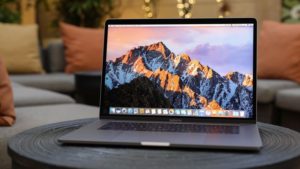
Whether you notice it or not right now, chances are you are putting a good amount of stress on your eyes. After all, you are staring at a computer, just like I am whenever I’m writing a review or working in general. True Tone might not sound like a huge deal when talked about in an article, but trust me, the difference is there. My eyes noticed the difference right away.
I first had a taste of this display technology on my iPhone. It basically uses light sensors to adjust the color temperature of the display to match up with the current viewing environment. Everything is changing on the fly, and to really test it, a person can move from room to room, or even go outside. Sometimes it happens so quickly that it is hard to pick up.
The difference between True Tone on an iPhone and on a MacBook Pro? Most owners are going to be staring at this bigger screen a lot longer during the day, so the impact over hours of use will be felt. Even if you stay stationary at a desk the entire day, the change
There are some tasks that won’t need this, including editing images or video and trying to be precise. However, it can easily be turned off temporarily, or permanently if it’s just not for you. For just about every person who spends a lot of time on their laptop though, your eyes will be thankful in the long run. I notice that I’m not squinting as much as I have in the past. I’m also not having to manually adjust my screen at all like I have with other MacBooks I’ve owned.
Keyboard Woes Are Over!
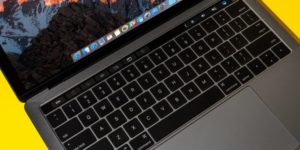
When the MacBook Pro received some design changes a couple years ago, one of the biggest complaints centered around something that should never really be an issue. Apple received a lot of heat for their new ultra flat keys because they weren’t as responsive. They were also loud, they stuck too often and overall it just seemed like a huge step backwards.
Enter the 2018 model. Apple finally has everything right again with the third-generation flat keyboard. This model is quieter than any other keyboard I’ve used on an Apple product. There is a new membrane under the keys, which looks to do a better job of keeping any small particles sneaking underneath keys and reducing the chance of keys sticking. It is hard to say at this point how well it works since the MacBook Pros are still so new, but Apple changing things up at least shows they know this has been an issue.
Currently, I have no complaints at all with this keyboard, and this comes from someone who had issues in the past with previous generations. It is too early to tell if there are any type of durability issues, but considering all the improvements they made to keep them quieter and cleaner under the keys, I feel confident that it will hold up nicely.
Touch Bar: Improved, But Still Not Perfect
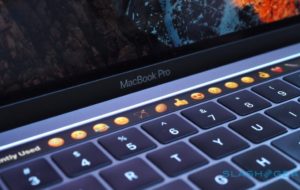
The Touch Bar was added to the previous generation of MacBook Pros, and many longtime users did not take to the change that well. This new technology, which basically replaces the function keys with a programmable display, is meant to provide ultimate flexibility with an eye on the future. The fact is, Apple may still be finding it a bit difficult to convince everyone that function keys are truly relics. Years and years of learning shortcuts can mean that a person using the Touch Bar for the first time will actually be slower. This is especially true for MacBook Pro users, since those opting for the expensive laptops are more likely to know, and use, more shortcuts involving function keys.
A big positive with the Touch Bar is that the fingerprint reader now works with a new security chip called the T2. It is separate from the rest of the Touch Bar, and it not only improves the quickness of the fingerprint read, but it also adds some new security measures to make users feel safer. One example is a secure path to prevent any type of malware infiltrating the boot up process.
I do find myself using the Touch Bar more frequently than I originally imagined. For example, there are ways to scrub through a video whenever one is playing, much like I would do if I was using my phone. There are also some editing tools that pop up. I admit that I’m still learning about the Touch Bar, as I’m sure most are, but it will be interesting to see what else I end up using more than I ever imagined.
Not Perfect, But Close
Overall, I really enjoy this MacBook Pro and believe that is was well worth the price. When I tested the 2017 model, I definitely didn’t feel that way. With all that being said, there are still a few things that are slightly annoying. Just be aware if any of these things are dealbreakers for you.
- Connectivity. Yep, you only have the USB-C ports on all MacBook Pro models. Apple is focused on the future, and there are adapters for standard USB connectivity. It’s just a nuisance in a lot of ways still since the technology isn’t as prevalent. I can’t plug in my latest iPhone into my latest MacBook Pro without buying an adapter or another cord.
- Limited Upgrades. By now, seasoned Apple users know that the company is not big on allowing consumers to customize or upgrade their machines after purchase. It’s great that you can upgrade the SSD, the RAM, etc. and make a super powerful machine at the start, but upgrading later just isn’t going to work.
- Keyboard Comfort. This is more of a laptop complaint in general, but no matter how much the Apple MacBook Pro keyboard has improved, it is not that easy to use for hours at a time. The comfort level isn’t great over a long period of time.
- Touch Bar. As mentioned above, the Touch Bar still seems a bit of a project more than something that is useful. It seems catered more towards a casual user, which is out of place being on the most professional version of the Apple laptop line.
Out of those four things, only the Touch Bar has a chance to be improved by Apple post-release. It will be interesting to see if they attempt to do anything new with it. As someone who is playing music a lot during my laptop use, I found it a little frustrating on default settings to have to press an extra button a lot of times to show the controls and change the sound. This can be adjusted, but the minor inconvenience of not having the standard function key row does rear its head occasionally.
Final Thoughts
The newest Apple MacBook Pro might not be perfect, but this seems like a worthy upgrade to me compared to the 2017 model. There were just too many things that did not work smoothly with that model, whereas the Apple MacBook Pro 2018 model seems more refined and more finished overall.
Apple currently still offers the 13-inch MacBook Pro without the 2018 upgrades (and no Touch Bar) for those people who want a cheaper option without dropping from the “Pro” line. If you are set on not using the Touch Bar and sticking with the physical function keys, this might be the best option. Personally, even though I’m still learning with the Touch Bar, I felt it was a worthy upgrade since it seems to be where the future is going with Apple in general.
If the MacBook Pro still just seems like way too much computer for your needs, be smart before upgrading. Both the 12-inch MacBook and the MacBook Air are due for an update at some point fairly soon, so either wait for those to be released, or look for great deals online on the current model.
I feel like the Apple MacBook Pro, simply put, is designed for the professional. I’m not editing videos for 40 hours a week, but I can when I need to. I’m not using programs that make most laptops kick the fans on to the highest level, but if/when I do, I know my laptop will be able to handle it. To me, that makes it the most versatile laptop Apple currently offers. One that is designed for right now, but also something that can hold up and last me for a few years without worrying about needing to upgrade. Thankfully, Apple’s 2018 update to the MacBook Pro line has everything back on track after a lackluster release last year.

Born and raised in Chicago. Former high school teacher who became sick of getting summers off so I took on a 12-month a year job.
